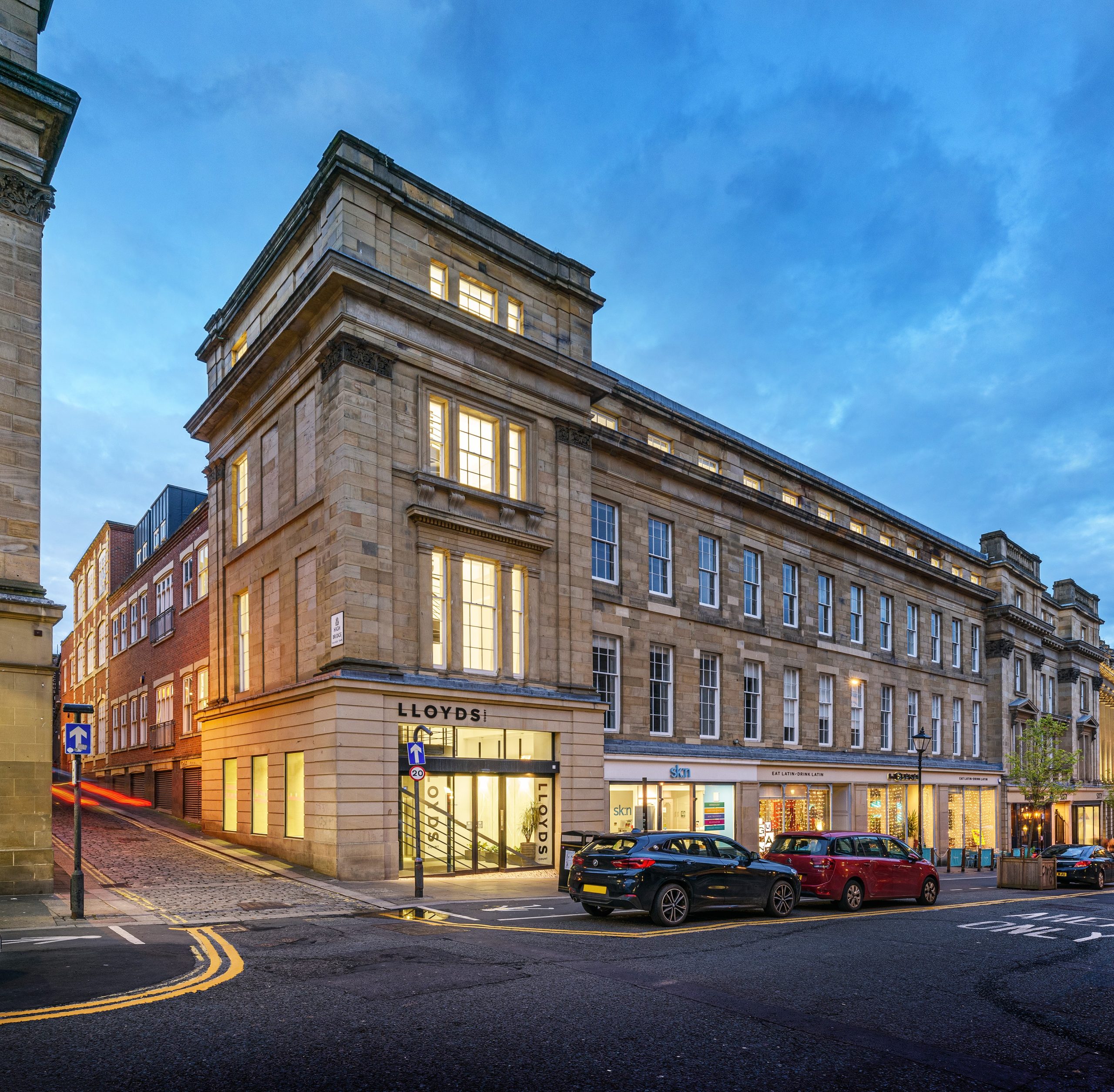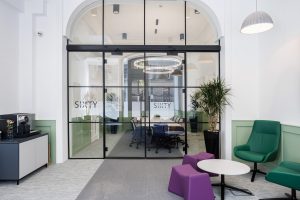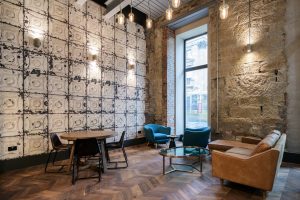Newcastle’s Grey Street: From corporate cast-off to tech hotspot
In an exclusive piece for N, Jessica Ross, head of office agency at Naylors Gavin Black, explores the evolution of Newcastle’s historic Grey Street.

Built by Richard Grainger and designed by architect John Dobson in 1837, the neo classical-style Grey Street is often cited as one of Europe’s finest roads.
Initially called Upper Dean Street – but renamed in honour of 1930s Prime Minister Charles Grey – Grey Street’s stunning sandstone properties are now Grade I and II listed.
The street was, for a long time, the traditional core of the Newcastle office market, commanding the city’s highest office rents.
Come the millennium, though, and the dynamics of Newcastle’s business districts were beginning to shift.
Quay to change
Towards the end of the 1990s, developer AMEC completed its decade-long, ambitious £170 million regeneration of Newcastle’s Quayside.
Excitement and hope were high as the Toon’s riverside rose from derelict to desirable, and delivered a number of new commercial buildings.
The lure of more modern and shiny new offices, with views of the River Tyne and an array of neighbouring new trendy bars and restaurants, was too much for many occupiers of Grey Street.
Professional services and corporate occupiers including Dickinson Dees, Ward Hadaway, NatWest and Barclays upped sticks, moving to purpose-built offices including Rotterdam House, Quayside House and St Ann’s Wharf.
These moves effectively knocked the North East’s most sought after business address off the top spot it had held for so long.
The Quayside’s gain was Grey Street’s loss.
Down but not out
Despite no longer being able to lay claim to the highest quality offices in the city and big name occupiers, Grey Street was still a great place to do business.
With its unrivalled city centre location and metro station and amenities on its doorstep, as well as stunning architecture and air of prestige, Grey Street continued to attract occupiers.
Throughout the 2010s, recruitment agencies, local solicitors, construction companies and marketing agencies filled the traditional-style offices.
Fast forward another ten years and Grey Street has undergone an impressive transformation for the modern era.
Once again, it is fit for businesses that require high-quality space.

- Jessica Ross, head of office agency at Naylors Gavin Black
The pandemic accelerated the street’s triumphant return to headline rents.
Companies are looking for less but better quality space with more amenities, which has served Grey Street well.
Developers including Buccleuch Property, Hanro, Malhotra and RPU Group have all pumped much-needed investment into creating hybrid, high-spec offices with high connectivity and the wow factor.
Upgraded and trend-led interiors, combined with the street’s grand sandstone facades, have attracted a plethora of contemporary tech companies, in particular.
Visualsoft, Tangent, Epic Games, Veriphy, Thoughtworks, Evolved Digital and Arctic Wolf all now call Grey Street home.
Saviours of the street
60 Grey Street and Lloyds Court are the two latest properties to see significant investment, courtesy of Buccleuch Property.
The properties have been completely transformed from secondary office spaces into prime, contemporary offices with break-out areas, welfare facilities and high-speed data connections.
Only a small amount of space remains available to let across the two properties, which have attracted tenants including global business consultancy Teneo and worldwide tech advisor Thoughtworks.
Judy George, asset management director at Buccleuch Property, says: “We regard Grey Street as one of the North East’s most exceptional architectural environments, so we are excited to play a role in its regeneration.
“Protecting and preserving heritage assets for future generations is one of our core commitments, and Grey Street aligns perfectly with this mission.

- Sixty Grey Street, in Newcastle
“Historic assets must evolve to stay relevant and meet the needs of future generations, and we are dedicated to creating best-in-class facilities that support thriving, ambitious businesses.”
Newcastle developer Hanro can also take some credit for regenerating Grey Street as a top business destination.
The firm bought the former Royal Turks Head Hotel, which later became a Barclays bank, for £4 million and spent £2 million reconfiguring it to create 20,000sq ft flexible office suites named No. 71 Grey Street.
The property had lain empty for several years before Hanro acquired it, with a vision of helping Grey Street return to its glory days as a bustling business hub.
Today, stunning contemporary interiors complement original stained-glass windows and staircases, which were carefully restored.
Digital agency Visualsoft was one of the first tenants to move in and its fit-out team created relaxed communal breakout areas, complete with pool table, a colourful kitchen area and a bistro-style dining area, where staff can invite friends for lunch.
Laura Lloyd, Hanro head of property, says: “As a local property company, it felt right for us to add No. 71 Grey Street to our portfolio.
“The history of the building is fascinating, and we knew we could breathe a new lease of life into it.

- No.71 Grey Street, in Newcastle
“It was important to us to create a modern working environment, while still retaining the impressive traditional features.
“No. 71 provides quality space for a new generation of firms.
“It’s satisfying to see Grey Street recover more and more of its original splendour.
“And with the council’s plans to enhance the public realm with rain gardens, café culture and new street furniture, it’s only going to get better.”
Grey Street stands as a testament to the resilience and adaptability of cities in the face of change.
What once was a symbol of Newcastle’s past has now become a beacon of its future, embodying the spirit of progress and innovation.
As tech companies continue to favour Newcastle’s historic Grainger Town, Grey Street has reaffirmed its position not only as a cultural icon but a vibrant centre of technological excellence in the heart of the North East.
September 26, 2024
- Build & Sustainability
